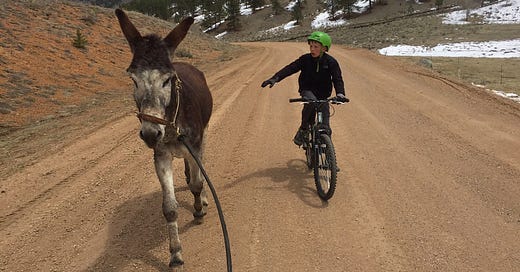He Runs Rocky-Mountain Marathons With a Donkey. It Was the Perfect Preparation for Being a Dad.
Becoming the world’s best burro-racer takes patience, humility and endurance—skills that came in useful in the amazing race that is fatherhood.

Photo by Hal Walter
It was a beautiful day for a track meet in the small mountain town of Fairplay, Colorado, which sits at nearly ten thousand feet. The high altitude and thin air didn’t bother twelve-year-old Harrison Walter. He often hikes and rides his multi-speed Diamondback mountain bike on the steep roads and trails around his home in the neighboring town of Westcliffe. He sometimes has to carry his bike while his dad bushwhacks a trail for them in the woods.
But as he approached the race’s second curve, Harrison veered off to the right. Then, he stopped. He ran in place. Then he backpedaled in front of the bleachers, nearly knocking down the two boys who had by then lapped him and were in first and second place.
Keep reading with a 7-day free trial
Subscribe to Narratively to keep reading this post and get 7 days of free access to the full post archives.




